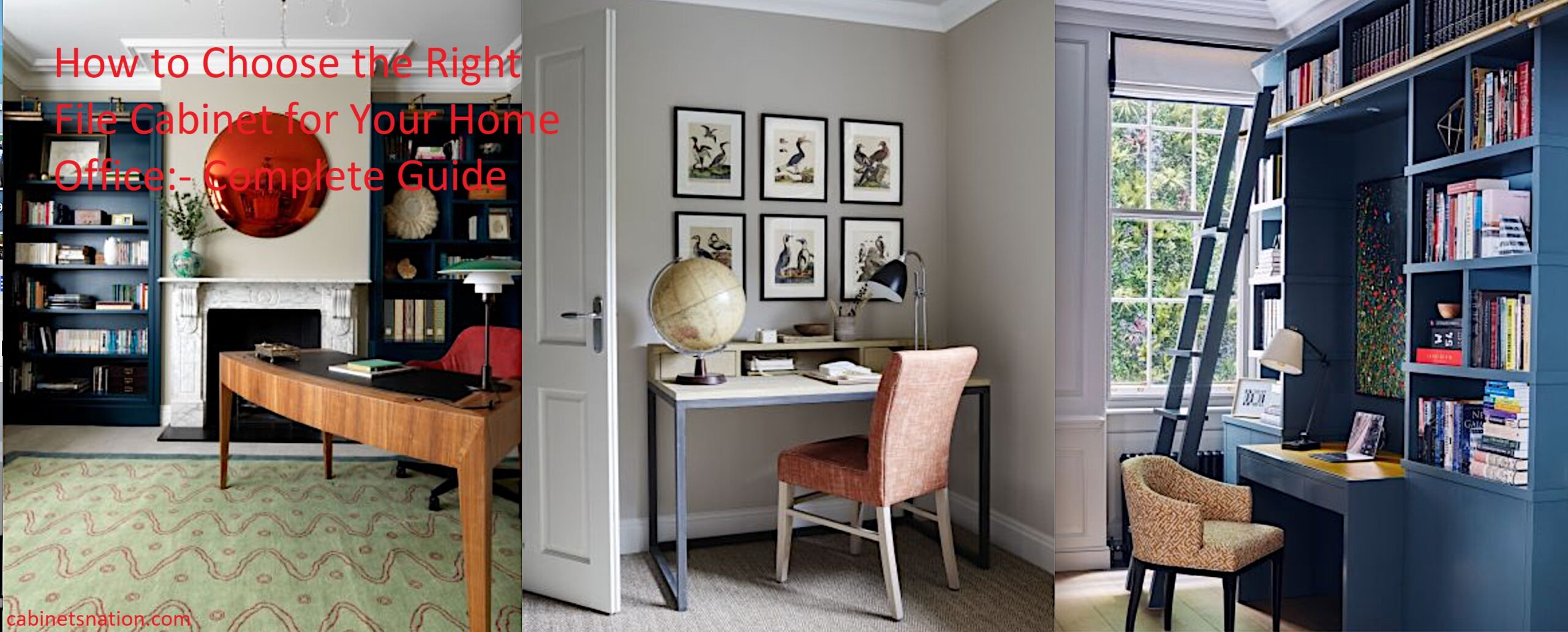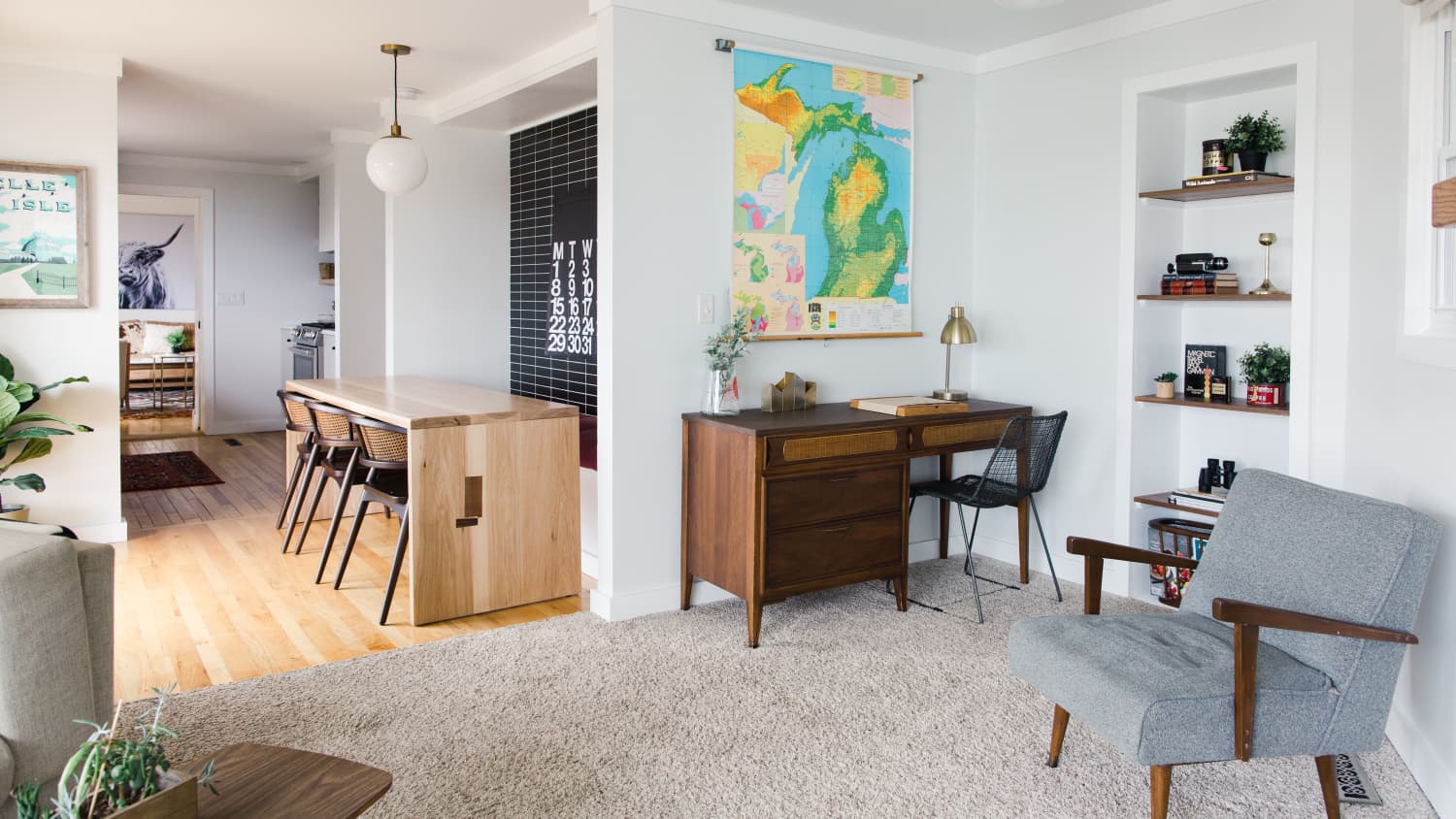Not sure how to create an organized and efficient home office? You’re not alone. But, with the right file cabinet, it can be easier than you think!
This guide will show you how to choose a filing cabinet that suits your needs – so you can get back to business.
Making the right decision when choosing a file cabinet for your home office is essential to ensure that you have an organized and efficient workspace. Having the right drawer and filing system for your needs can help keep important documents safe and easily accessible whenever you need them.
When shopping around, there are various factors to consider, including cost, size, style, and capacity. This guide will provide an overview of these variables in order to assist you in making an informed decision when picking out the ideal filing cabinet for your specific needs.
Considerations for Choosing a File Cabinet
When selecting a file cabinet, storage capacity is not the only important consideration; you also need to think about how much weight you plan to store in it and whether or not it will fit in with your décor. Here are a few tips to help you choose the right file cabinet for your needs:
Size: File cabinets come in a variety of shapes and sizes, ranging from small two-drawer units designed for filing folders, to larger six-drawer models ideal for document storage. Consider how much space you have available and what size of unit would best fit in with your layout. If space is tight but filing needs are still high, why not look at alternative options such as shelving based systems?
Weight: Filling up the drawers can quickly add up when it comes to weight. Generally speaking, if it’s going to be regularly filled with lots of paper or other materials, then opt for one made from metal rather than wood; however, if you just need an eye-catching piece of furniture without storing too much weight inside, then wood might be fine.
Design/Décor: The type of material used can have an effect on the overall look of your office—if all the furniture is wooden, having a metal cabinet may make things look out of place. The biggest benefit of metal cabinets is that they often come with decorative features such as handles or raised edges — these features can help bring the design together by drawing attention away from any imperfections!
Size and Capacity
The size of the file cabinet you need for your home office will depend, in large part, on the amount of documents you need to store. Most files cabinets come in two general sizes, lateral (side to side) and vertical (up and down). The capacity is determined by the number of drawers, number of hanging folders per drawer and how much those drawers can hold.
Typically, lateral cabinets hold more than vertical ones due to their wider design; however if space is an issue in your small or home office a vertical cabinet may be the best choice. Depending on capacity needs, it may be beneficial to invest in one larger file cupboard instead of multiple smaller ones.
The Recommended Storage Capacity Guide recommends this breakdown based on a standard letter-sized file:
- 2-drawer filing cabinet–approximately 2,000 letters
- 3-drawer–approximately 3,000 letters
- 4-drawer–approximately 4,000 letters
- 5+ drawer–approximately 5,500+ letters
If you have larger documents like legal or A4 size files that take up more volume/space in storage for every letter than a standard letter size file does then you will probably want to get something larger than what is recommended here depending on how much paperwork/documents you have stored.
Material
When choosing a file cabinet for your home office, it is important to select the right material. There are several options available on the market, ranging from natural wood to heavy duty metals. It is essential to decide what features are most important to you beforehand so that you can choose one that best suits your needs.
Wooden file cabinets are popular because they offer a classic look and feel that fits into many home offices. These cabinets come in different shades and finishes, so it easy to find one that compliments your existing décor. However, keep in mind that wood is not as durable or water resilient as other materials and may require extra care when cleaning and maintenance.
Metal filing cabinets offer superior strength and durability compared to their wooden counterparts and come in different colors such as silver or black. They may be more cost-effective too and boast improved security covering a variety of locking mechanisms from standard key locks to more advanced combination locks for better protection against break ins or theft.
Polypropylene plastic filing cabinets have the advantage of being lightweight yet strong, offering both strength and portability for those who wish to move them around on occasion. They may also come with useful features like adjustable shelves for flexible storage options according to need or adjustable glides for smooth drawer operation no matter where you place them in your workspace.
Security Features
Security is an important consideration when selecting a file cabinet for your home office. In order to protect your confidential data, look for a cabinet that features enhanced security features. Depending on the amount of sensitive information you intend to store in the cabinet, you may want to consider one or more of these additional security measures:
– A built-in locking mechanism with individual compartments protects different users’ documents and helps to prevent unauthorized access.
– Fire-resistant construction protects stored documents from damage due to accidental fires. Fire ratings are commonly indicated by UL ratings which range from “1” (lowest) to “4” (highest) with most cabinets having a rating of 1 or 2 hours depending on the manufacturer.
– Most filing cabinets also have optional locks available such as keyed locks and combination locks that can provide additional protection if required.
– Biometric locks provide an even higher level of security by requiring unique fingerprints for access; however, these can be expensive and unreliable in some cases making them not suitable for all applications.

Mobility
It is important to consider whether your file cabinet will be able to move when selecting the right one for your home office. If you do not have a fixed location for your home office, having a mobile file cabinet can be very beneficial; it allows you to easily move and relocate the cabinet, ensuring you are able to take advantage of any available space.
In general, locking wheels offer the most flexibility in terms of mobility. Most models will come with either two or four wheels, allowing you to make quick adjustments as necessary. Additionally, it’s best to make sure the locking mechanism is strong and reliable; it should be able to hold your cabinet firmly in place without any risk of slipping or losing stability even if bumped or moved. You may also want to search for features such as handle/trailer packages that add an extra level of convenience when moving the cabinet from room-to-room or across your office area.
Types of File Cabinets
File cabinets come in a variety of shapes, materials, and sizes, allowing you to choose the best option for your specific needs. There are four main types of file cabinets: wood, metal, lateral-drawer and vertical-drawer. Each is suitable for different storage needs and has unique advantages over the other.
Wood File Cabinets: Wood file cabinets come in a variety of styles and finishes, ranging from antique to modern. They generally offer more decorative options than other types of cabinets and are ideal for home offices that need a touch of class or warmth. However, they can be much heavier than their metal counterparts so they may require assistance when moving them around.
Metal File Cabinets: Metal file cabinets have several advantages over wood models. They are often lighter weight than wood and don’t require extra care like polishing or waxing to maintain their appearance. Additionally, they may have anti-tilt features to prevent drawers from falling forward when opened. Some high-end models also feature ball bearing glides which make opening the drawers smoother and easier.
Lateral-Drawer File Cabinets: Also known as side filing cabinets or flat files, lateral file cabinets are typically wider than the typical vertical filing cabinet with two rows of drawers that stretch from side to side instead of up and down. They are perfect for storing larger documents such as architectural plans, blueprints or large folders that won’t fit neatly into standard filing drawers due to their wide size.
Vertical-Drawer File Cabinets: Vertical-drawer file cabinets save on space but still offer plenty of storage space with its two rows of drawers stacked from top to bottom instead of side to side like its lateral counterparts do. This space saving design makes them an ideal solution for smaller home offices that need plenty of organizational options but don’t have enough space for larger pieces furniture such as credenzas or modular desk systems.
Vertical File Cabinets
Vertical file cabinets are the classic mainstay of home office storage. They can range from a full size 3-drawer cabinet to a mini or desktop size. A quality vertical filing cabinet usually has at least 2 drawers but can have up to 5.
The top drawer of a quality vertical file cabinet is typically used for quick access items such as files that are frequently accessed and need to be stored in an organized manner. The remaining drawers can be used for larger and heavier items such as textbooks, magazines, legal documents and other bulky documents requiring customized organization.
However, because the vertical cabinet often takes up more floor space than other filing cabinets, it is best suited for users who don’t have limited office space or who do not mind the additional floor space they offer.
Advantages and disadvantages
Before selecting a file cabinet for your home office, it is important to consider the advantages and disadvantages of the different types available. File cabinets offer an efficient storage solution for keeping important documents safe, secure, and organized. They also come in a variety of finishes and prices to suit all budgets. However, each type of file cabinet has its own unique features to consider before making your purchasing decision.
Advantages: -File cabinets provide an organized, easily accessible way to store important documents without taking up too much space. -They come in a variety of different sizes and materials, so you can choose one that best meets the needs of your particular office space or workspace. -Selecting the right type of filing cabinet ensures that you will have enough space to store all necessary paperwork without having too little or too much room. -Having an effective filing system will make locating important documents substantially easier and faster when needed.
Disadvantages: -File cabinets can take up additional space on top of other existing furniture in your workspace or home office if not chosen carefully for size restrictions -Getting a higher grade steel file cabinet may be more expensive compared to lower grades depending on the material used -Certain models do not have built in locks for extra security measures which are especially essential if you plan on storing confidential information
Situations where vertical file cabinets are best suited
Vertical filing cabinets may be the right option for some users. These cabinets are taller but narrower than lateral file cabinets and are a great choice when space is at a premium. Because their feet are narrow, they’re perfect for tucking against the wall in tight spaces, like alcoves or alongside desks and laptops.
Vertical file cabinets offer the same basic features as lateral ones: locking drawers, caster wheels to move them around, and fireproofing materials. However, because vertical filing cabinets tend to be smaller than lateral ones, you may not have as much storage capacity — often only two or three drawers deep. This limits the number of folders or other documents you can store per drawer; small documents such as computer paper could fit more easily but larger items might not fit comfortably.
Vertical file cabinets also tend to be slightly cheaper per drawer than other models and are available in a variety of styles and finishes including metal (typically steel), laminate, wood grain and deep blue options.
Lateral File Cabinets
In a lateral file cabinet, the drawers are wider but not as deep as traditional vertical file cabinets. Usually, the top drawer has just enough space for legal-size documents; wider drawers go lower. Most of these cabinets hold either letter- or legal-width files, with a few models holding both.
A single lateral file cabinet usually holds two rows of hanging folders either side-by-side or back to front. This makes them useful for office organization when multiple people need to access files.
If you need more storage space than what one lateral file cabinet can provide, consider combining two units together.
Advantages and disadvantages
When it comes to choosing a file cabinet for your home office, there are some important factors to consider. By understanding the advantages and disadvantages of different types of file cabinets, you can ensure that you make the right decision for your particular needs.
Advantages of File Cabinets:
- They provide secure storage for your documents and files.
- File cabinets are an affordable way to store and organize large amounts of paperwork.
- They are durable, easy to use, and come in a variety of sizes, styles, and materials.
- Most file cabinets have lockable doors or drawers, so you can secure important documents from unwanted access.
Disadvantages of File Cabinets:
- Some older models may be too bulky for limited spaces such as apartments or home offices.
- Metal file cabinets can be difficult to transport if not properly secured or padded when moving.
- They tend to take up a lot of floor space and may affect the aesthetics of your office setting unless they are inconspicuous in design.
Situations where lateral file cabinets are best suited
If you find yourself in need of additional storage space, a lateral file cabinet may be the ideal solution. This file cabinet style is wider than a traditional vertical model, allowing for more storage inside. It is also normally equipped with drawers on all sides, increasing accessibility and convenience.
Lateral file cabinets offer plenty of room to store folders, hanging folders and other documents as needed. This makes them well-suited for situations in which you’re regularly working with large volumes of paperwork, such as a home business or major project you’re taking on for work. They can also be used to store craft supplies or organized stock of items you might use on an ongoing basis such as office supplies or part ingredients.
These cabinets come in a range of sizes and are typically available in several finishes if desired. Depending on your situation and preference, you may want to go with a model that has drawers at the top, bottom or both depending on what it will be used for most often. The widths range from 30 inches all the way up to 72 inches so there are sizes available that will fit in almost any workspace or tight corner when needed — even spaces where vertical filing cabinets won’t fit!
Conclusion
Choosing the right file cabinet for your home office requires careful consideration of your needs and tastes. You will need to assess how much space you have available and what types of documents you need to store.
If you want a more aesthetically pleasing look, choose a vertical filing cabinet in a style that reflects your personal taste. Additionally, consider practical features such as safety locks, numbered file compartments, and easy-to-install castors.
Above all, make sure the file cabinet is sturdy enough to withstand everyday use and is within your budget.
With these considerations in mind, you are sure to find the perfect file cabinet for your home office!
FAQ’s
Which type of file cabinets are popular?
The most popular type of file cabinet is the vertical filing cabinet, which maximizes storage in a small space.
How do I set up a good home filing system?
A good home filing system should be organized, accessible, and secure. To set up a home filing system, you should:1. Designate a specific filing space: a drawer, shelf, or filing cabinet.2. Decide what documents to keep, how long to keep them, and how to categorize and label the files.3. Buy the necessary supplies, such as hanging folders, file folders, and labels.4. Set up the filing system for easy access with clearly labeled folders and file labels.5. Make sure to back up important documents digitally.
How big should a file cabinet be?
It depends on the type and number of items stored in it. Most filing cabinets come in standard sizes that range from lateral (28\”W x 19\”D x 28\”H) to vertical (18\”W x 24\”D x 28\”H).
How do you categorize a file cabinet?
A file cabinet can be categorized based on its size, material, color, and type (lateral or vertical).
What are the disadvantages of filing cabinets?
The disadvantages of filing cabinets are: they take up physical space, they can be cumbersome and difficult to move, they can become disorganized and difficult to access, they can be vulnerable to theft, and they are not secure or fireproof.
Which filing system is most popular in office?
The most popular filing system in an office is a traditional paper filing system.
What is the alternative to a filing cabinet?
The alternative to a filing cabinet is an electronic filing system, such as an online document storage system or a software-based filing system.
What type of cabinet is best?
The best type of cabinet depends on the size and layout of the space, as well as the style of décor and desired storage needs.
What is the most common cabinet style?
The most common cabinet style is the flat-panel or slab-front cabinet, which features a plain front with no detailing.
What are the two types of filing cabinets?
The two types of filing cabinets are vertical cabinets and lateral cabinets.
See more-
- Best under cbainet range hood 2023
- Best sewing cabinet 2023
- Best medicine cabinet 2023
- Best outdoor storage cabinet 2023
- Best under cabinet lighting battery 2023


